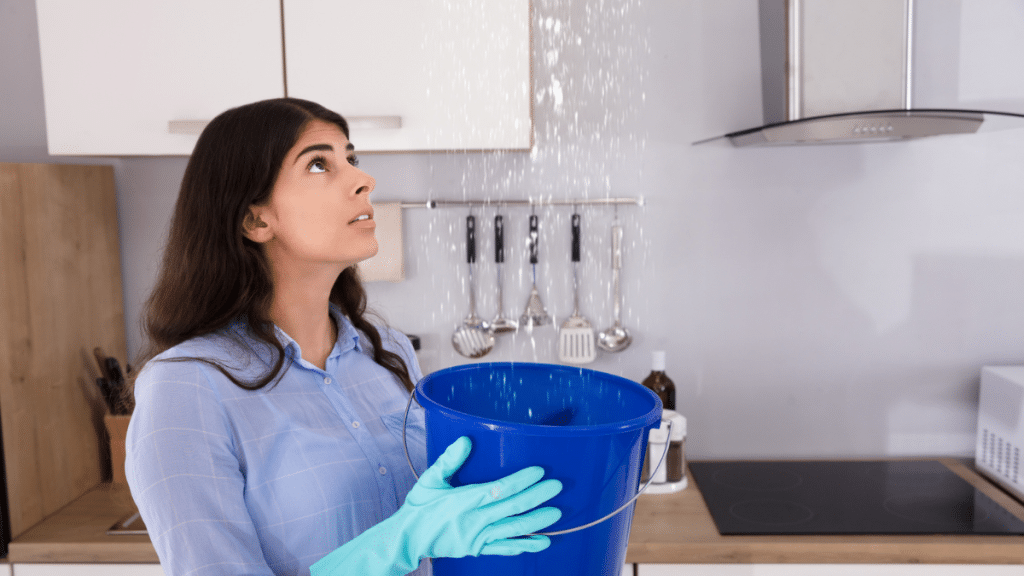A leaking roof can cause significant damage before it becomes obvious. Water can seep into ceilings, walls, and insulation, leading to costly repairs. Spotting early warning signs helps prevent structural damage and protect a home from deterioration. This guide highlights key indicators that homeowners in Jacksonville should watch for when checking for leaks.
Water Stains on Ceilings and Walls
Roof repair in Jacksonville, FL, becomes necessary when brown or yellow stains appear on ceilings and walls, signaling moisture intrusion. Brown or yellow stains on ceilings and walls suggest that moisture is seeping through. These stains may start small but can spread over time, indicating that water is consistently making its way inside. If left untreated, leaks can lead to mold growth and weakened drywall.
Detecting stains early can help prevent larger structural concerns. Even if the marks appear dry, the damage may still be active beneath the surface. A quick inspection of the attic or upper floors can help determine the source of the moisture. Addressing these early warnings promptly prevents long-term complications.
Damp or Moldy Odors Indoors
An unexplained musty smell inside the home can strongly indicate hidden moisture. When water leaks into insulation or wooden beams, it creates the perfect environment for mold and mildew. These odors often develop in enclosed spaces, such as attics, crawl spaces, or behind walls.
Mold growth not only damages materials but also affects indoor air quality. Prolonged exposure to damp conditions can weaken wooden structures and cause the insulation to lose its effectiveness. Checking for soft or damp spots in ceilings and walls can confirm the presence of moisture. Finding the source early can help prevent extensive and expensive repair work in Jacksonville.
Missing, Damaged, or Curled Shingles
A damaged roof is more likely to let water in, making exterior inspections essential to home maintenance. Signs that indicate a need for roof repair in Jacksonville include missing, cracked, or curled shingles. When shingles deteriorate, they expose the underlying structure to rain and humidity.
Strong winds, heavy rain, and sun exposure contribute to roofing materials’ gradual wear and tear. Regularly checking the surface for changes in appearance can help catch potential concerns before they worsen. Shingles that no longer lay flat or have visible cracks should be replaced promptly. Addressing minor damage early helps prevent water from infiltrating deeper layers.
Granules Collecting in Gutters and Downspouts
Shingles shed tiny granules that protect against UV rays and harsh weather as they age. If a significant amount of these granules collects in gutters or downspouts, it may indicate that the roofing material is wearing down. When shingles lose their protective coating, they become more vulnerable to leaks and cracks.
Inspecting gutters after a storm can reveal how much material is shedding. A few granules are normal, but excessive accumulation suggests that shingles may need replacement. Shingles become brittle and less effective at repelling water without their protective layer. Keeping an eye on this warning sign helps homeowners plan for necessary repairs before leaks begin.
How Can a Reliable Roofing Service Fix a Leaking Roof?
A dependable roofing company in Jacksonville provides effective repairs to stop leaks and prevent further structural damage. Professionals begin with a thorough inspection to identify the source of the leak, whether it’s damaged shingles, deteriorated flashing, or clogged gutters. Once the problem is located, they use high-quality materials to seal openings, replace compromised sections, and reinforce weak areas.
Seeking roof repair in Jacksonville, FL, helps homeowners maintain a safe and secure home. They can spot early signs of a leak that can help prevent costly damage and extend the life of a home. Discoloration, musty odors, and missing shingles are key indicators that require attention. Checking for granules in gutters and scheduling regular inspections ensures long-term durability.
